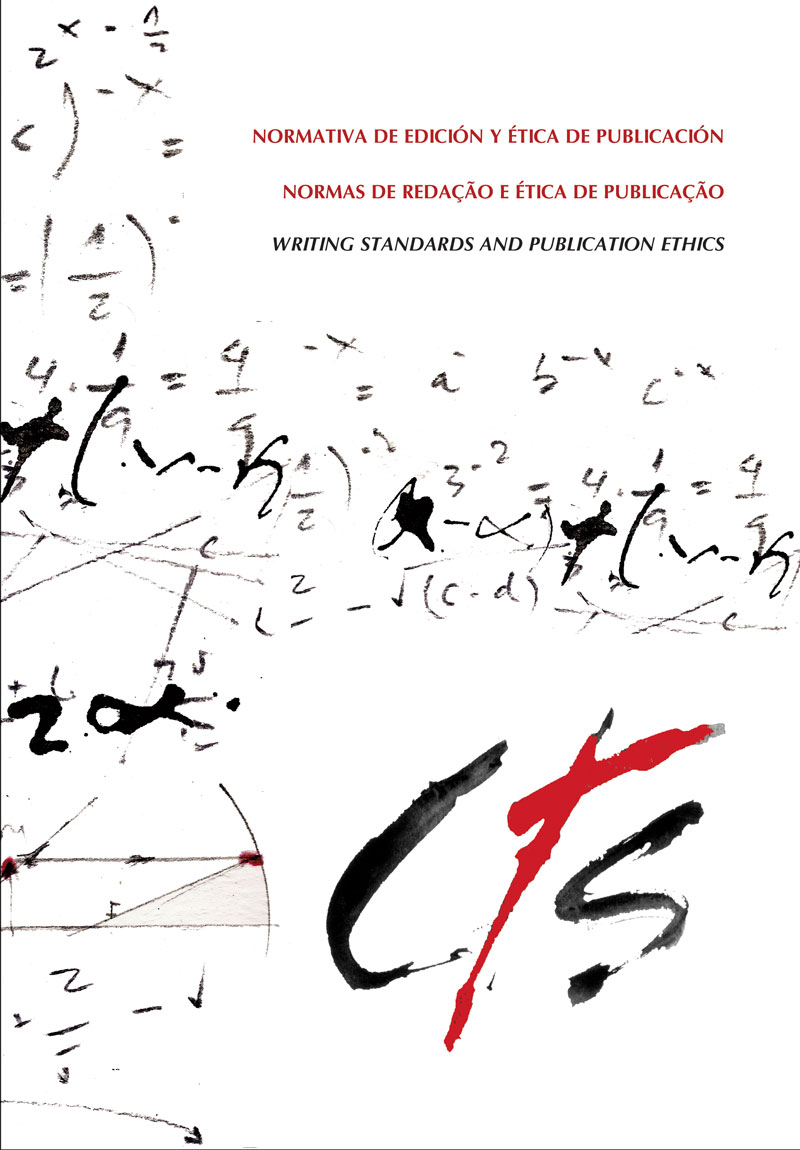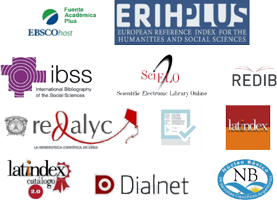Is There Such a Thing as a Precautionary Science?
An Analysis of the Influence of Precaution in the Generation of Regulatory Knowledge
DOI:
https://doi.org/10.52712/issn.1850-0013-425Keywords:
precautionary science, precautionary principle, science and technology regulation, regulatory science, risk assessment, benefit assessmentAbstract
The precautionary principle has been the guiding idea of precautionary regulation of science and technology, i.e., regulation that goes beyond simple risk assessment. Here we argue that, nowadays, due to the current state of science and technology regulation, it might make sense to differentiate the precautionary principle from a different kind of regulation, one that we will term “precautionary science”. The latter is important in regulatory processes that aim at managing uncertainty by applying methods like post-marketing monitoring or the reversal of the burden of proof. The precautionary principle, in contrast, tries to minimize uncertainty by renouncing the generation of scientific information, and proceeding directly with the substitution of scientific-technological products and processes considered more benign for others that are considered potentially dangerous. In sum, the precautionary principle aims at reorienting technological development, while precautionary science is geared towards the generation of information about potential consequences of products, as well as their controlled management.
Downloads
References
Blaauboer, B., Boobis, A., Bradford, B., Cockburn, A., Constable, A., Daneshian, M., Edwards, G., Garthoff, J., Jeffery, B., Krul, C. & Schuermans, J. (2016). Considering new methodologies in strategies for safety assessment of foods and food ingredients. Food and Chemical Toxicology, 91, 19-35.
De Sadeleer, N. (2007). Implementing the Precautionary Principle. Approaches from the Nordic Countries, EU and USA. Londres: Earthscan.
European Commission (2000). Communication from the Commission on the precautionary principle, COM 1 (2000). Bruselas: CE.
European Parliament and Council (2001). Directive 2001/18/EC (12/3/2001) on the deliberate release into the environment of genetically modified organisms. Official Journal of the European Communities, L106, 17/4/2001.
European Parliament and Council (2003). Regulation 1830/2003 on the traceability and labelling of genetically modified organisms (GMOs) and the traceability of food and feed products produced from GMOs. Official Journal of the European Communities, L268, 18/10/2003.
Funtowicz, S. & Ravetz, J. (1993). Science for the Post-Normal Age. Futures, 25, 739-755.
Gibbons, M., Limoges, C., Nowotny, H., Schwartzman, S., Scott, P. & Trow, M. (1994). The New Production of Knowledge: The Dynamics of Science and Research in Contemporary Society. Londres: Sage.
Hansson, S. (1997). Can we reverse the burden of proof? Toxicology Letters, 90, 223-228.
Hansson, S. (2020). How Extreme Is the Precautionary Principle? Nanoethics, 14, 245-257.
Hansson, S., Carlsen, L. & Tickner, J. (2007). Chemicals regulation and precaution: does REACH really incorporate the precautionary principle. Environmental Science & Policy, 10, 395-404.
Jiménez-Buedo, M. & Ramos Vielba, I. (2009). ¿Más allá de la ciencia académica? Modo 2, ciencia posacadémica y ciencia posnormal. Arbor, 185, 721-737.
Krewski, D., Andersen, M., Tyshenko, M., Krishnan, K., Hartung, T., Boekelheide, K., Wambaugh, J., Jones, D., Whelan, M., Thomas, R., Yauk, C., Barton‐Maclaren, T. & Cote, I. (2020). Toxicity testing in the 21st century: progress in the past decade and future perspectives. Archives of Toxicology, 94, 1–58.
Luján J. L. & Todt O. (2012). Precaution: A taxonomy. Social Studies of Science, 42, 143-157.
Luján, J. L. & Todt, O. (2018). The dilemmas of science for policy. EMBO Reports, 19, 194-196.
Luján, J. L. & Todt, O. (2021). Evidence Based Methodology: A Naturalistic Analysis of Epistemic Policies in Regulatory Science. European Journal for Philosophy of Science, 11, 1-19.
Michaels, D. (2008). Doubt is our product. Oxford: Oxford University Press.
Michaels, D. & Monforton, C. (2005). Manufacturing Uncertainty. American Journal of Public Health, 95(S1), 39-49.
National Research Council (2007). Toxicity Testing in the 21st Century: A Vision and a Strategy. Washington DC: National Acadamies Press.
Nowotny, H., Scott, P. & Gibbons, M. (2001). Re-Thinking Science. Knowledge and the Public in an Age of Uncertainty. Cambridge: Polity Press.
Raffensperger, C. & Tickner, J. (1999). Protecting Public Health and the Environment: Implementing the Precautionary Principle. Washington DC: Island Press.
Rechnitzer, T. (2022). Applying Reflective Equilibrium. Towards the Justification of a Precautionary Principle. Springer: Cham.
Rudén, C. & Hansson, S. (2010). Registration, Evaluation, and Authorization of Chemicals (REACH) is but a first step – How far will it take us? Six further steps to improve the European chemicals legislation. Environmental Health Perspectives, 118, 6–10.
Sunstein, C. (2002). Risk and Reason: Safety, Law and the Environment. Cambridge: Cambridge University Press.
Sunstein, C. (2005). Laws of fear: beyond the precautionary principle. Cambridge: Cambridge University Press.
Tickner, J. (Ed.) (2003). Precaution, Environmental Science, and Preventive Public Policy. Washington, DC: Island Press.
Todt, O. & Luján, J. L. (2014). Analyzing precautionary regulation: do precaution, science and innovation go together? Risk Analysis, 34, 2163-2173.
Todt, O. & Luján, J. L. (2017). Non-Cognitive Values and Methodological Learning in the Decision-Oriented Sciences. Foundations of Science, 22, 215-234.
Todt, O. & Luján, J. L. (2022). Rationality in Context: Regulatory Science and the Best Scientific Method. Science, Technology & Human Values, 47, 1086-1108.
Weinberg, A. (1972). Science and Trans-Science. Minerva, 10, 209-222.
Westmoreland, C., Bender, H., Doe, J., Jacobs, M., Kass, G., Madia, F., Mahony, C., Manou, I., Maxwell, G., Prieto, P., Roggeband, R., Sobanski, T., Schütte, K., Worth, A., Zvonar, Z. & Cronin, M. (2022). Use of New Approach Methodologies (NAMs) in regulatory decisions for chemical safety: Report from an EPAA Deep Dive Workshop. Regulatory Toxicology and Pharmacology, 135, 105261.
Wiener, J., Rogers, M., Hammitt, J. & Sand, P. (2011). The Reality of Precaution. Londres: Earthscan.
Downloads
Published
How to Cite
Issue
Section
License
Copyright (c) 2024 CC Attribution 4.0

This work is licensed under a Creative Commons Attribution 4.0 International License.
All CTS's issues and academic articles are under a CC-BY license.
Since 2007, CTS has provided open and free access to all its contents, including the complete archive of its quarterly edition and the different products presented in its electronic platform. This decision is based on the belief that offering free access to published materials helps to build a greater and better exchange of knowledge.
In turn, for the quarterly edition, CTS allows institutional and thematic repositories, as well as personal web pages, to self-archive articles in their post-print or editorial version, immediately after the publication of the final version of each issue and under the condition that a link to the original source will be incorporated into the self-archive.











